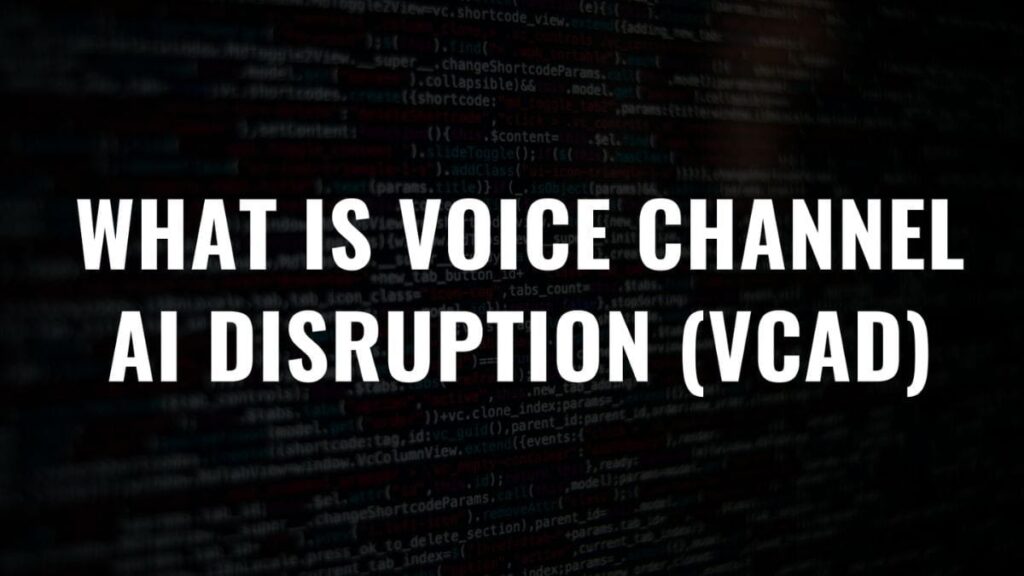New York City (New York) [USA], February 17: Imagine a bank customer service person taking what looks to be a typical call. The caller appears normal, asks intelligent questions, and even becomes irritated—but it is not a genuine client. It is exactly what it says: an AI bot. This bot delays actual clients for ten minutes, costing the company millions in lost productivity.
As more sophisticated attack methods are used, disruptions are becoming more common. The complexity of AI-driven attacks is growing, with businesses facing unexpected threats. This new wave of threat, known as Voice Channel AI Disruption (VCAD), is an advanced AI-driven attack that doesn’t rely on overwhelming call volumes like traditional Telephony Denial of Service (TDoS) attacks. Instead, it employs advanced conversational AI bots that exploit corporate resources and avoid detection systems to engage in long, realistic conversations with call center staff. Numerous bot assaults are causing a lot of damage, accounting for up to 11.8% of all cyber losses globally. Bot attacks rose by 88% in 2022 and 28% in 2023, respectively.
How does Voice Channel AI Disruption (VCAD) Work?
1. Fewer Calls, More Wasted Time
VCAD attacks don’t deluge businesses with short calls; instead, they involve fewer but lengthier conversations. These calls keep agents busy, which gradually lowers productivity and makes it more difficult to identify the attack.
2. Long, Realistic Conversations
Unlike typical bots, which use scripted communications, VCAD bots sound human. They utilize artificial intelligence to comprehend context, modify their tone, and reply intuitively, making them practically indistinguishable from real consumers.
3. No Spikes, No Warnings
Security systems usually detect attacks by spotting sudden increases in call volume. VCAD calls stay at normal levels, slipping past detection while still disrupting operations.
Instead of crashing systems, VCAD attacks drain time and resources by keeping agents occupied with convincing, time-consuming conversations.
Why is Voice Channel AI Disruption (VCAD) So Hard to Prevent?
In contrast to previous robocall attacks that used brief, repeated messages, VCAD bots are able to speak, reason, and adapt, making them nearly identical to human callers. Due to their constant evolution, VCAD assaults are extremely resilient to conventional security solutions.
-
Constantly Changing Tactics : Each attack is created differently every time. The bots change their voices, speaking styles, and phone numbers to avoid detection. They also learn from past failures, making security measures less effective.
-
AI Sounds Like a Real Person : These bots copy natural human speech, including pauses and tone changes, so they don’t sound robotic. Unlike old robocalls that used fixed scripts, these bots respond in a flexible way, helping them avoid spam filters.
-
Fake Caller IDs & Smart Adjustments:Â It is impossible to completely stop them since AI may produce phone numbers that look legitimate but are fake. The bots are also able to keep an eye on security systems and can adjust their approach in real time to review safeguards.
Voice Channel AI Disruption (VCAD) developing strategies make it a significantly more complicated and resilient threat than traditional call flooding attacks.
Future Trends and Evolving Threats
The use of lifelike voices by bots in AI-powered phone scams is making them more convincing, making it difficult to distinguish between human and automated calls. Deepfake technology allows scammers to mimic trusted people, tricking others into giving away personal information or money. Although there are improvements in detecting these scams, such as analyzing behavior and voice patterns or improving caller ID, scammers are likely to keep finding new ways to trick people.
To stay ahead of these evolving threats, detection methods and technology must be constantly improved. People and businesses can also protect themselves by learning about various scams and how they operate, which helps recognize the warning signs and reduces the chances of being targeted. Awareness and the use of modern prevention tools are key to fighting these fake attacks.
If you have any objection to this press release content, kindly contact [email protected] to notify us. We will respond and rectify the situation in the next 24 hours.


